Liverpool WwTW (2016)
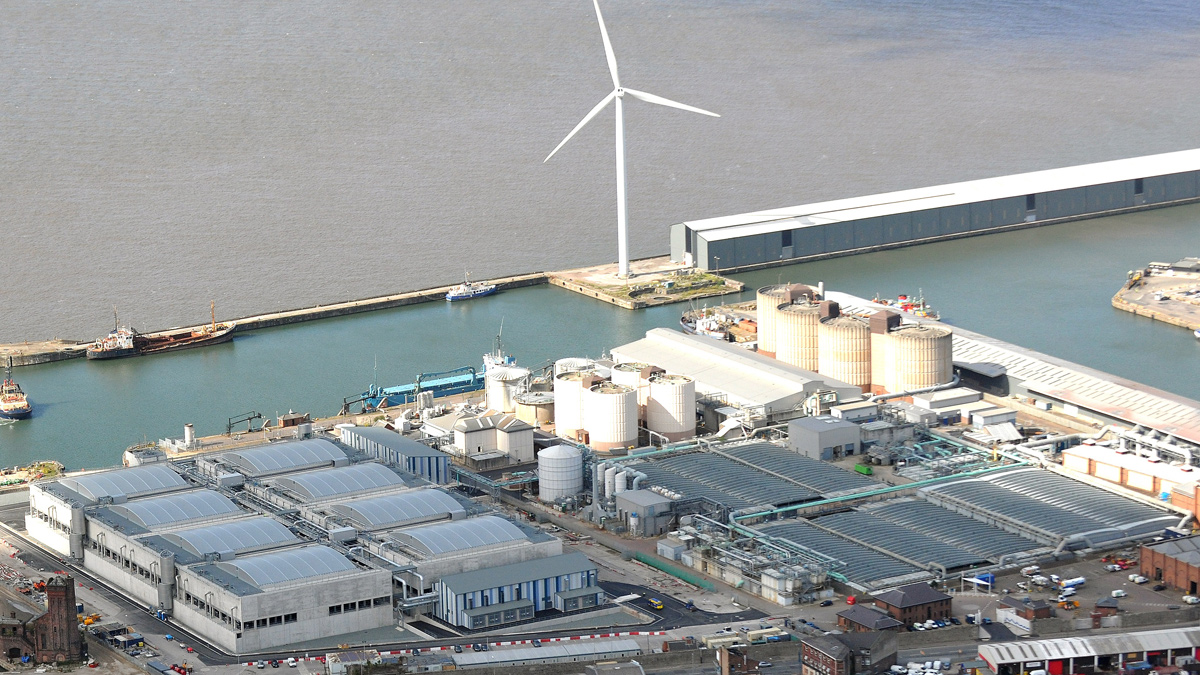
Completed Liverpool WwTW upgrade - Courtesy of United Utilities
United Utilities’ (UU) flagship sequencing batch reactor (SBR), constructed in the Wellington Dock heritage site is now complete and in successful operation. The £200mn Liverpool WwTW upgrade scheme has delivered a state-of-the-art works to improve the quality of the water in the River Mersey. The project was part of the £3.6 billion invested by United Utilities in AMP5 across the North West, to improve water quality and the environment, with its delivery spanning into AMP6 where United Utilities are continuing to invest to deliver real improvements for customers and the environment.
This paper is the last of a series of six articles published by UK Water Projects since 2012, detailing the development at Liverpool WwTW. The others can be accessed here:
- Liverpool WwTW Introduction (2012)
- Liverpool WwTW Early Construction (2013)
- Liverpool WwTW Construction & Process Plant (2014)
- Liverpool WwTW Outfall Extension (2014)
- Liverpool WwTW CASS SBR Plant (2015)
Background
In the 1980s the Mersey was the UK’s most polluted estuary. The river underwent a revival through the Mersey Estuary Pollution Alleviation Scheme (MEPAS), a 29km interceptor sewer channeling into UU’s Liverpool WwTW, commissioned in 1991.
Two decades on, UU decided an innovative secondary treatment works was needed to continue to robustly protect the Mersey. An SBR uses a conventional activated sludge process, where settled sewage is treated by a suspension of micro-organisms, removing harmful bacteria and joining suspended solids together, with the aim to make final effluent as clean and clear as possible.
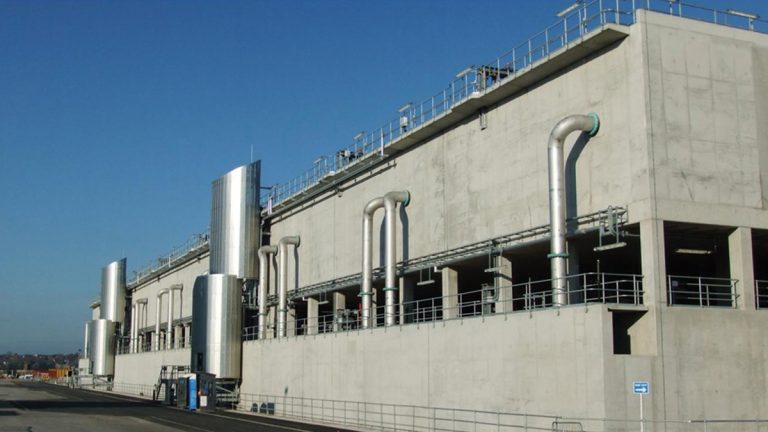
SBR southern elevation – Courtesy of United Utilities
Solution
United Utilities (UU) commissioned the first multi-storey Sequencing Batch Reactor (SBR) in the UK and engaged GCA JV, a joint venture between GallifordTry, Costain and Atkins, to deliver the asset on Liverpool’s iconic waterfront. A build boasting innovation and technology, a dock reclamation, retention of maritime features and respect for a UNESCO World Heritage Buffer Zone.
With space at a premium at UU’s Sandon Dock, neighbouring Wellington Dock was the only practical location for the SBR. Space was less than half the footprint for a typical works of this size and the only option was to build up, not out.
The two-storey 16-basin SBR is the largest sequencing batch reactor in the UK and is the major part of UU’s £200m state-of-the-art upgrade at its Liverpool WwTW. Its creation combined with improvements to existing site assets and a new 285m long x 2.1m diameter outfall extension in the River Mersey to form the programme of upgrade works.
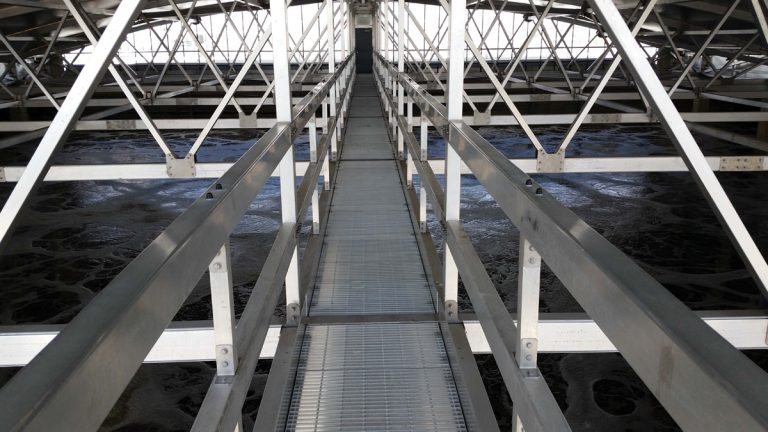
Inside upper SBR basin – Courtesy of United Utilities
Design
UU has generally championed Building Information Modelling (BIM) in the water industry. For the Liverpool WwTW upgrade a full 3D model acted as the Single Point of Truth, enabling collaboration and integration between designers, constructors, process partners and the supply chain. A BIM server station was installed in the site offices, BIM software installed on all site office computers and iPads used to review BIM in the field. It enabled the highest precision of design, planning, management, implementation and a 4D timeline.
Where necessary, laser scan surveys of existing assets was undertaken to enable them to be digitally incorporated into the BIM model of new assets. BIM was further developed by United Utilities to provide a Digital Asset Integrated Model to support the ongoing operation and maintenance of the upgraded WwTW.
Construction summary
Wellington Dock’s gates were closed for the first time since 1946, marine life relocated, 31,000m3 of silt removed and the dock infilled with 206,000m3 of sand fed in through pipework from a marine vessel. The 21m high SBR was constructed using a combination of in situ and precast concrete. The concreting process was simplified using system formwork for the repetitive structural elements.
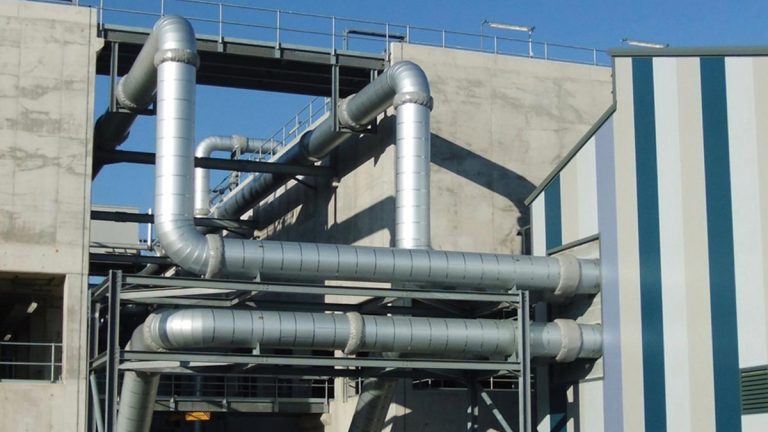
East entry to central gallery – completed – Courtesy of United Utilities
Due to limited site space, pipework ‘cassettes’, structural steel and electrical MCCs were assembled and tested off-site, just in time production utilised and construction teams worked round-the-clock. This was supported by United Utilities’ established Design for Manufacture & Assembly (DfMA) continuous improvement process.
A One Team One Aim initiative saw UU employees, contractors and supply chain working together to ensure successful design and build. The parties were co-located on site to ensure close collaboration and ownership of problems.
Lean principles, adapted from manufacturing, together with collaborative planning, increased productivity and reduced waste. Stakeholder management was essential with upwards of 50 organisations involved.
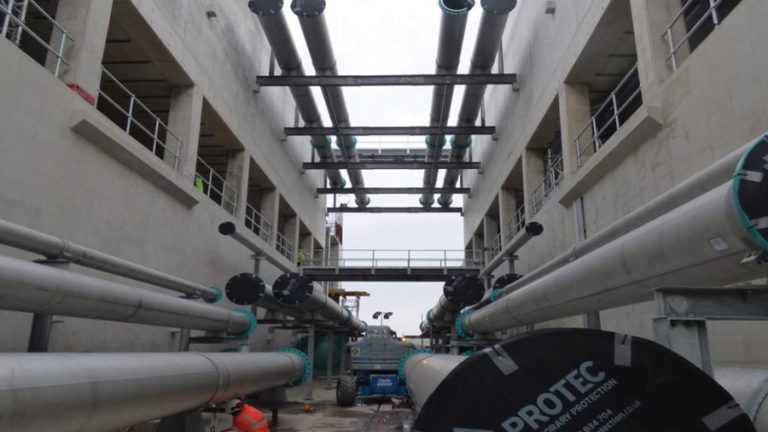
Central gallery under construction (DfMA) – Courtesy of United Utilities
Heritage
Marine features were preserved including the listed perimeter granite dock walls, mooring posts, capstan engines, gas lamp standards and ship’s bell. Three sets of replacement perimeter timber gates were manufactured in heritage design. Architects designed passenger cruise liner aesthetics with polished steel funnels covering stair towers and nautical tone cladding. The in-dock area was finished with green slate to emulate water.
Outcome
The upgrade was delivered 15% under budget, 6 months ahead of schedule with well over two million man-hours worked. First flows were turned in May 2015 and, following a phase commission and transfer of flow from existing assets, the new assets have been successfully treating full flows since September 2015. All performance and reliability test requirements have been achieved and the new assets are outperforming forecast on energy efficiency.
Water quality in the River Mersey continues to improve with octopus, salmon and adult cod returned, grey seals spotted and a hump back whale sighted in June 2015.
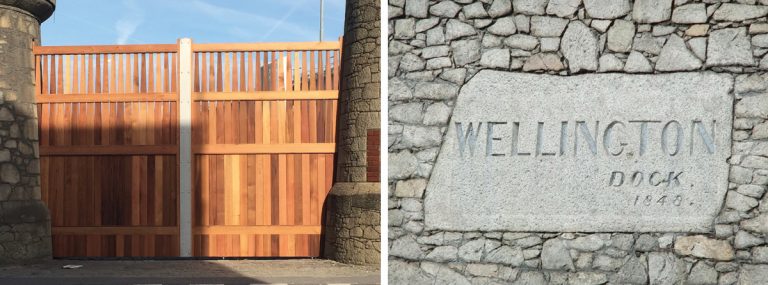
(left) Replica heritage timber gates and (right) name stone in listed wall – Courtesy of United Utilities
Royal opening
On Tuesday 5 April 2016 HRH Princess Anne, the Princess Royal officially opened the newly extended treatment works – hailed as a significant milestone in the clean-up of the River Mersey.
HRH Princess Anne also unveiled a special plaque commemorating the site’s expansion, 25 years since she first opened the works back in 1991. She also shared some words about the importance of wastewater treatment.
Conclusion
The Liverpool WwTW programme has been a great success; delivered under budget, ahead of programme as well as performing robustly and efficiently.








